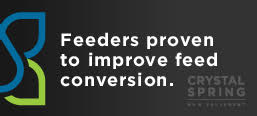Dr. John Carr a world livestock consultant, veterinarian, and lecturer, living in Brisbane, Australia and no stranger to the hog industry in Canada shared some thoughts personally and business about the world hog industry on a recent The Swine It podcast show with host Dr. Laura Greiner.
“Okay. I’m a veterinarian and I love pigs. I have no issue with saying that. I started working with pigs when I was 11, and I would argue almost everything I’ve learned I probably learned before 18.”
While vet school may not have taught him much about pigs it taught him much more about animals. Even in the ‘70s and ‘80s, pigs moved into a bit of a background species which challenged him throughout his professional life.
Dr. Carr started working with pigs at the age of eleven tagging along collecting the eggs at the local farm, tail dock and teeth clip the piglets, and moving the piglets around. At 14, he fed and looked after pigs on weekends, where his love for pigs started.
“In some respects, it reflects my professional life. I’m not the son of a pig farmer. I grew up working as a stockman, stock person.”
He said, (and it’s so noticeable in how Dr. Carr treats his pig farmer clients) he’s always conscious of the people working on the farm. His goal is always to help reduce the amount of work by employees.
“It is very easy being a veterinarian to say, oh, we’ll vaccinate against coronavirus and then walk away. But, on the other hand, you’ve just given some guy 5000 injections to do four times a year to adult sows who don’t necessarily appreciate it. And I was that guy you gave that to, so I tend to be a little bit like, “Do I, really, really have to do this? Is there an alternative way” before I manage to get my hand bitten off by one of these beautiful animals. But they do have large mouths and big teeth.”
Dr. Greiner asked Dr. Carr where he sees the future of swine production ten or even 20 years from now in light of the difficult labour situation.
“If we’re going to enhance animal welfare and production, then we need only employ people who truly love working with the animals.”
With a shortage of labour for the pig industry worldwide the local barn operator must set up the system to work efficiently with fewer people who love the work.
Looking back at how the traditional farm that grandfather worked on, 250 sows, was a big pig farm.
“If you think about what granddad did and then rethought it, food conversion matters today. We’ve got to compete against poultry. So what matters today is the weaner. We’ve got to get the weaner off to a great start. We’ve got to get that food into the pigs. We’ve got to get the pigs going.”
It’s about biosecurity and the perimeter fence protecting against African Swine Fever. While a horrible disease there is no reason for commercial pig farmers to be concerned about ASF.
“It’s a very blunt statement. ASF moves three meters. So what, you’re telling me that you can’t defend your farm for three meters because that’s all you have to do? You must ensure that your pigs do not meet any other pig, which could be pig feces, for three meters. And you’re fine.”
Dr. Carr farmed pigs in Ukraine for 15 years before ASF came and they have no problem with the dreaded disease despite having ASF 50 meters from their farms without impact.
“I repeat it’s all about biosecurity and perimeter fence. The United States sadly talks a big story about biosecurity and then acts a very poor story.”
Unfortunately, the Americans need to learn a bit of a British attitude where every man’s home is his castle and protect it in any way possible but for sure with fences.
“I’m afraid we need perimeter fences around our farms in ASF. And that doesn’t mean we turn our farms into prison because, unfortunately, people from outside think, oh, they put a fence up. So there must be something to hide.”
Perimeter fencing will need to become a priority with wall-to-wall pigs in the US and Canada. •
— By Harry Siemens





